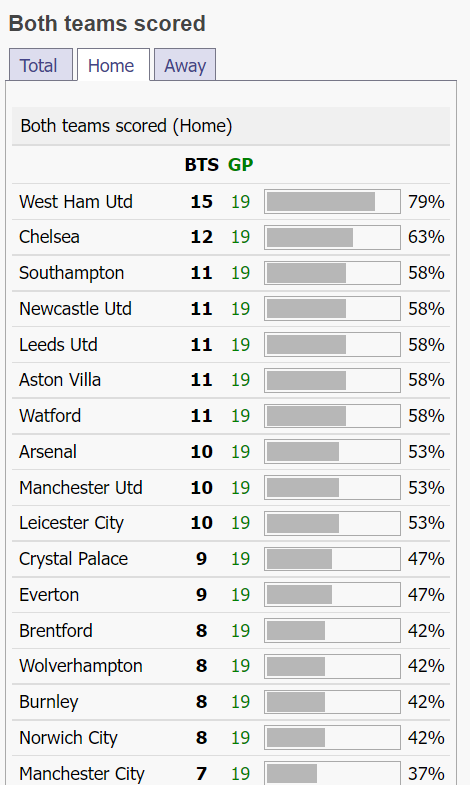Betting Tipsters: Your Secret Weapon for Winning Wagers in 2024
When it comes to sports betting, many punters often feel like they’re rolling the dice, hoping for the best.
But what if you could turn the odds in your favour?
Enter betting tipsters – the experts who analyse stats, trends, and form to provide you with well-researched predictions.
These days with an ever-growing variety of sports and betting options, tipsters are more valuable than ever.
Let’s explore how tipsters betting can become your secret weapon for consistent, informed wagering success.
Tipsters for Betting 101: Who Are They and What Do They Do?
Betting tipsters are professional sports prediction experts who specialize in providing the best betting tips, often backed by deep statistical analysis and industry knowledge.
These individuals, or sometimes teams, dedicate their time to studying games, tournaments, and players, offering insights that casual bettors might miss.
Betting predictions are shaped by expert analysis and various factors, including team performance, statistics, and game conditions, to provide bettors with informed betting tips.
There are various types of betting tipsters:
- Sport-specific tipsters focus on one sport, such as football betting tipsters, horse racing tipsters, or tennis betting experts.
- Generalists offer tips across a range of sports but may not delve as deeply into each one.
- Value bet tipsters are those who specialize in spotting opportunities where the bookmakers have set odds that don’t accurately reflect the true probability of an event happening.
Betting tipsters use various methods to analyse games, often relying on form, player injuries, head-to-head stats, and other performance indicators.
Some modern tipsters also employ betting algorithms or statistical analysis software to predict outcomes, enhancing their ability to provide reliable betting advice.
Technology has revolutionised the world of betting tipsters.
From advanced prediction tools to tipster betting software platforms, modern tipsters have access to more data and better forecasting methods than ever before.
This combination of human insight and technology-driven predictions has made betting tipsters a key part of many punters’ betting strategies.
Top 10 Betting Tipsters
In the world of sports betting, having the right guidance can make all the difference, and these top ten betting tipsters have consistently demonstrated their ability to deliver profitable insights and strategies.
These are all tipsters we have tested out here on the site at Honest Betting Reviews under live trial conditions.
Only the very best have stood up to the test and made it on to this top 10 list!
10. The Inside Man
- Sport: Football
- Return on Investment (ROI): 10%
- Win Rate: 52%
The Inside Man is a football tipster with a unique advantage, having previously worked as a bookmaker.
Adam Cheng, the man behind The Inside Man, was formerly the Head of Football Trading at Fitzdares.
In this role, he didn’t just set the odds for the bookmaker but also traded football markets to boost profits.
In 2020, Adam transitioned to becoming a full-time professional gambler, and his results have been impressive since then.
According to Bet Chat’s website, he has generated over 150 points of profit with a 10% ROI.
With a 52% win rate, more than half of his bets have been successful so far.
From our own experience, The Inside Man service has been outstanding, earning us over 60 points during our trial.
The service is easy to follow, with 5-10 bets per week, mainly focusing on match odds, Asian handicaps, and player pass markets.
Overall, The Inside Man is a top tipster and a service well worth considering.
9. Patrick Ross Tennis
- Sport: Tennis
- Return on Investment (ROI): 12%
- Win Rate: 63% (Spartan Trading Tips)
Run by renowned tennis expert Patrick Ross, this service stands out from typical tennis betting offerings.
The service includes the Tennis Goldmine betting system, which Patrick designed to lay players based on specific criteria.
During our live trial, the system delivered 28 points profit with a 10% ROI.
In addition to the Tennis Goldmine system, Patrick provides his own betting tips and Spartan Trading Tips, which earned 71 points in our trial.
It’s worth highlighting that his trading tips have reportedly turned a 100-point bank into 1,500 points, demonstrating the effectiveness of his methods.
This level of success showcases Patrick’s analytical skills and deep knowledge of tennis.
Over the years, Patrick Ross has generated significant profits and is widely regarded as one of the top tennis betting experts.
8. Racing Intelligence
- Sport: Horse Racing
- Return on Investment (ROI): 14%
- Win Rate: 40%
Racing Intelligence earns a position in our rankings of the best tipsters for betting by adopting a distinctive and non-traditional approach compared to most tipsters.
Rather than relying on conventional methods such as form analysis, this service sets itself apart by obtaining tips from an “insider” employed at a major UK bookmaker.
Although claims of “inside information” can often be met with doubt, our live trial validated Racing Intelligence’s integrity, delivering outstanding results.
Throughout the trial, the service produced a remarkable 192 points profit at advised prices and 76 points profit at Betfair SP.
Looking at its long-term track record, Racing Intelligence is comparable to the industry’s elite, having accumulated over 1,000 points profit at advised prices and 500 points at Betfair SP.
With such impressive performance across both advised prices and BSP, Racing Intelligence justifiably secures a prominent position in our rankings.
7. Ben Coley – The Sporting Life
- Sport: Golf
- Return on Investment (ROI): N/A
- Win Rate: N/A
The lead golf tipster at The Sporting Life is Ben Coley, a highly regarded and well-known figure with a history of notable wins, making him a favorite among golf punters.
Ben had a successful 2020, landing big wins such as Marc Warren at 150/1 in the Austrian Open, Sami Valimaki at 250/1 in the Oman Open, and Cameron Smith at 50/1 in the Sony Open.
While 2019 wasn’t one of his strongest years, Ben was profitable in the three preceding years, which is commendable. He bounced back impressively in 2021, 2022, and 2023, bringing his overall profits to +2,385 points.
Throughout his career, Ben has secured some massive wins, including one at 300/1!
These are remarkable accomplishments, but it’s important to recognize that securing Ben’s advised prices can be a challenge. Due to his popularity (and the fact that his tips are free), many punters struggle to get the same odds and often have to settle for lower prices.
This isn’t a reflection on Ben—if anything, it speaks to the quality of his tips.
Even with the odds drop that often occurs, Ben has more than earned his reputation as one of the top names in sports tipping.
6. Bet Alchemist
- Sport: Horse Racing
- Return on Investment (ROI): 13%
- Win Rate: 15%
Under the expert leadership of Nicky Doyle, The Bet Alchemist has consistently demonstrated its value over the years.
Since its launch in 2012, the service has generated a total profit of just over 820 points.
This averages out to an impressive annual profit of 72 points, equating to approximately £3,620 in profit when using £50 stakes.
A key highlight of The Bet Alchemist is its focus on widely available prices, rather than solely chasing the highest odds.
This makes it easier for members to match the advertised results, a significant advantage over many other tipsters.
In our own trial, The Bet Alchemist delivered a solid profit of 38 points, with a strong 26% ROI.
The service particularly shines during major racing festivals, with an impressive track record of landing big-priced winners.
It has secured victories at odds of 25/1, 66/1, 33/1, and more at prestigious events like Cheltenham.
Following the service is simple, with most bets provided on weekends and during major race meetings.
In recent years, The Bet Alchemist has been on a hot streak, delivering 109 points of profit in 2023 and over 100 points so far in 2024.
With its consistent performance and reliability, it is a valuable asset to any betting portfolio.
The Bet Alchemist’s long-standing success makes it a trusted option for bettors looking for a dependable tipster service.
5. Premium Boxing Tips
- Sport: Boxing
- Return on Investment (ROI): 13%
- Win Rate: 66%
Premium Boxing Tips ranks high on our list as the gold standard for boxing tipsters, boasting an impressive track record in this niche.
Since 2015, the service has accumulated 800 points in profit—equating to £8,000 if you were staking £10 per point, a substantial return.
With a 66% strike rate and 13% ROI, Premium Boxing Tips has maintained excellent performance over an extended period.
What really sets this service apart is its methodical approach. It’s all about uncovering value in the markets and placing well-researched, strategic bets.
As highlighted in our full review, Premium Boxing Tips is known for its consistency and reliability. The profit graph is a testament to that, showing a steady upward trend since the service began—something many tipsters aspire to achieve.
During our trial, the service delivered 117 points in profit, and its results have continued to impress beyond our review period.
The tips cover a range of markets, including outright winners, method of victory, and round betting, with a focus on identifying undervalued odds.
With years of experience and a data-driven, analytical approach, Premium Boxing Tips ensures every selection is grounded in facts. It’s truly a top-tier sports tipster.
4. Scottish Confidential
- Sport: Football
- Return on Investment (ROI): 10%
- Win Rate: 43%
Scottish Confidential is a tipster service dedicated exclusively to Scottish football.
Run by a university-educated mathematician based near Glasgow, the tipster behind this service boasts an impressive and diverse background.
He has worked at major bookmakers, served as a proprietary trader for an Asian private investment syndicate, and acted as a consultant for a quant-driven hedge fund specializing in Scottish betting markets.
His deep local knowledge of teams, players, and their motivations has made him a sought-after expert in the field.
The results speak for themselves: Scottish Confidential has delivered over 200 points in profit with a 43% strike rate and a 10% return on investment (ROI).
We’ve followed this service for four years and can verify that the reported results are accurate and consistently excellent.
The tipster primarily focuses on match odds (1X2) but also explores markets such as over/under 2.5 goals, draw no bet (DNB), and double chance (DC).
From the Scottish Premiership to League Two, Scottish Confidential has achieved outstanding profits over the years, leveraging its unparalleled knowledge of Scottish football.
This makes Scottish Confidential a top service for those not only interested in Scottish football but also in making consistent profits from sports betting.
3. Hanbury Racing
- Sport: Horse Racing
- Return on Investment (ROI): 31%
- Win Rate: 19%
Hanbury Racing, a relatively new addition to the tipster scene, has quickly gained attention since its launch in 2020.
Operating on the Mega Tipsters platform, this service has become known for landing winners at odds of 100/1 and even higher.
To date, Hanbury Racing has achieved over 1,500 points in profit, which equates to more than £15,000 with £10 per point stakes.
While the service holds a solid 19% strike rate, its most impressive feature is the 31% return on investment (ROI).
Richard Hutchinson, the expert behind Hanbury Racing, brings extensive horse racing knowledge, which is evident in his detailed write-ups.
His expertise was further validated when he won the Tote Ten To Follow Jumps competition in 2020.
During our live trial, Hanbury Racing delivered outstanding performance, generating 238 points of profit with a 27% ROI.
Notably, they also secured a 100/1 winner during the trial—one of the biggest wins we’ve ever recorded.
Hanbury Racing’s exceptional success in recent years firmly places it high on our list of top tipsters.
2. The Golf Insider
- Sport: Golf
- Return on Investment (ROI): 30%
- Win Rate: 11%
Coming in at number two on our list of the top betting tipsters is The Golf Insider, which boasts an impressive track record spanning seven years.
Renowned for uncovering substantial winners at high odds, The Golf Insider consistently delivers exceptional results.
Since launching their tipping service in 2014, they have achieved over 2,000 points in profit, amounting to £20,000 if you were staking £10 per point—a remarkable return.
What truly distinguishes The Golf Insider is their impressive 30% ROI, a level of performance that is exceptional in any sport.
During our live trial, they recorded winners at 150/1 and 50/1, concluding with a total profit of 406 points.
Some of The Golf Insider’s most significant victories include odds of 150/1, 200/1, 125/1, and beyond, showcasing their skill in identifying undervalued players.
Their computer model and value ratings consider critical statistics such as strokes gained off the tee, greens in regulation, and putting performance.
With a long-term record of success and consistent results over the years, The Golf Insider’s expertise and knowledge are beyond question.
Given their outstanding performance and longevity, it’s no surprise that The Golf Insider so high on our list of the best tipsters for betting.
1. The Bookies Enemy
- Sport: Horse Racing
- Return on Investment (ROI): 12%
- Win Rate: 19%
The Bookies Enemy currently sits at the top of our rankings of betting tipsters, having earned this distinction through an exceptional track record and outstanding performance.
The service is operated by Gary Poole, a seasoned professional punter with more than 20 years of experience.
In 2022 alone, The Bookies Enemy achieved over 300 points in profit, boasting an impressive ROI exceeding 40%.
Gary continued this success with an additional 150 points in profit in 2023, further enhancing the service’s reputation.
What sets The Bookies Enemy apart is its ability to meet all the criteria of a top-tier tipster.
First, the returns have been remarkable, with a staggering £26,000 in profit accumulated at £25 per point stakes since 2017, alongside significant profits during Gary’s tenure as a private tipster.
Second, the service maintains a solid strike rate of 20% and a 14% ROI, demonstrating consistent performance over the past six years.
Third, The Bookies Enemy has exhibited impressive consistency, with a high percentage of winning months and profitable years.
Finally, the service is easy to follow, typically providing just a few bets each day. Tips are usually posted the evening before the races, allowing ample time to place your bets.
During our live trial, The Bookies Enemy delivered over 104 points in profit over three months, showcasing its effectiveness.
With sustained success and excellent results, The Bookies Enemy is highly recommended and rightfully deserves its top-ranking position in this list of the best tipsters for betting.
The Good, The Bad, and The Scammy: How to Identify Reliable and Profitable Tipsters
The sports betting world is not without its shady characters, and unfortunately, this includes some betting tipsters.
The challenge is finding reliable sports tipsters who are genuinely knowledgeable and trustworthy.
Here’s how to separate the good from the bad:
- Trustworthy betting tipsters have a verified track record. They should be able to show historical results, either through a third-party verification service such as this site or on public forums. Verified tipster track records offer transparency and help you assess their tipster accuracy rates and tipster win percentages.
- Be wary of tipsters making outrageous profit guarantees or offering “sure wins.” Sports betting is never a guarantee, and anyone claiming otherwise is likely misleading you. Tipster scam prevention involves spotting these kinds of claims early.
- A good tipster will always be transparent about both wins and losses. The best tipsters may not win every bet, but over time, they should demonstrate a positive tipster ROI analysis (return on investment).
Many reliable tipsters also provide information on free bets, which are promotional offers allowing users to place wagers without risking their own money.
To find reliable betting tipsters, look for profitable tipsters with proven track records and the benefits they offer, such as exclusive insights and expert advice.
You can use tipster comparison websites such as this one, where you can read reviews and performance data for verified tipsters.
Additionally, social media platforms and betting tipster forums are invaluable resources for discussing tips and identifying which tipsters consistently deliver.
Maximizing Your Profits: Betting Strategies for Following Tipsters
Once you’ve found a good tipster, the next challenge is knowing how to maximize your returns from their advice.
Bankroll management is essential when following tipsters. You’ll need to allocate your betting funds in a way that allows for both risk and longevity.
Many bettors use a bankroll strategy where they bet a fixed percentage of their total bankroll on each tip, usually between 1% and 5%. This limits losses while allowing for long-term growth.
Another key to success is learning how to interpret and act on a tipster’s advice. Blindly following tips without understanding the reasoning behind them can be risky.
Balancing multiple tipsters’ recommendations can also enhance your strategy, as long as their advice aligns and doesn’t contradict.
While following tipsters, it’s important to also develop your own skills. Learn about the sports you’re betting on, study betting markets, and continue to evolve.
This way, you can become less reliant on tipsters over time and better assess their suggestions.
The Psychology of Following Betting Tipsters: Mindset for Success
Betting, especially when relying on tipsters, is as much about psychology as it is about strategy. Managing your mindset is crucial to long-term success.
First, it’s essential to manage your expectations. No matter how reliable a tipster is, there will be losses.
Building discipline and patience is key to ensuring that you don’t make impulsive bets after a losing streak.
Avoid chasing losses, which is one of the most common psychological pitfalls in betting.
Moreover, adopting a long-term perspective will help you maintain emotional balance. Focus on the overall trend rather than individual wins or losses.
Betting tipsters often perform best over a longer timeframe, so it’s important to stick with their strategies, even during down periods.
Betting Tipsters Across Different Sports: A Comprehensive Guide to Sports Betting
Tipsters aren’t one-size-fits-all. The best tipster for football may not be the best for horse racing or tennis.
Let’s take a closer look at how betting tipsters perform across different sports:
- Football betting tipsters often specialize in major leagues, offering advice on markets like accumulator bets, in-play betting, and value bets. Football is a data-rich sport, so tipsters here often rely on statistical models to predict outcomes.
- Horse racing tipsters are prized for their ability to analyse form, track conditions, and jockey performance. Unlike other sports, where team stats are more significant, individual factors like the horse’s health and trainer play a huge role.
- Tennis betting experts typically focus on individual matchups and surface preferences, offering insight into player form and head-to-head records.
Additionally, platforms offering free football tips can be invaluable for both new and experienced bettors, providing a variety of tips to help make informed and profitable betting choices.
Seasonality plays a big role too.
For example, tipster performance tracking in sports like football and tennis may show dips during off-seasons or tournament transitions.
Meanwhile, emerging trends in niche sports like esports betting are presenting new opportunities for bettors.
The Business of Betting Tipsters: Services, Subscriptions, and Free Tips
When choosing a betting tipster, you’ll have two main options: paid tipster services or free betting tips.
Paid tipster services often come with a subscription fee, and their tips are usually more detailed, with a focus on maximizing returns.
However, before signing up for any paid service, it’s important to conduct a tipster services comparison.
Assess whether the subscription cost is justified by the tipster’s profit margins, tipster customer support quality, and the tipster selection criteria they use.
On the other hand, many free platforms provide useful tips, but the quality is often inconsistent.
Leveraging the best free betting tips from experienced tipsters with verified track records can be crucial for both novice and seasoned bettors.
Leveraging free tips can be a good way to supplement paid services or test out a tipster before committing to a subscription.
Additionally, free super tips offer zero-cost betting predictions across various sports, backed by extensive research and expert tipsters, providing actionable insights to enhance your betting strategies.
Responsible Betting
At HonestBettingReviews, we prioritize responsible betting practices to ensure a safe and enjoyable experience for all users.
We understand that sports betting can be a fun and exciting way to engage with your favourite sports, but it’s essential to maintain a responsible approach to avoid potential risks.
Here are some key principles to keep in mind:
- Set a budget: Establish a budget for your betting activities and stick to it. This will help you avoid overspending and minimize the risk of financial difficulties.
- Know your limits: Be aware of your own limits and don’t bet more than you can afford to lose. It’s essential to recognize when you’re on a losing streak and take a break.
- Don’t chase losses: Avoid chasing losses by betting more to recoup your losses. This can lead to a vicious cycle of debt and financial problems.
- Take breaks: Take regular breaks from betting to reassess your strategy and maintain a healthy perspective.
- Seek help: If you’re struggling with problem gambling, seek help from a reputable organization or support group. We provide resources and support for users who need assistance.
By following these responsible betting principles, you can enjoy sports betting while minimizing the risks. Remember, betting should be a form of entertainment, not a way to make a living.
Additional resources:
- National Problem Gambling Helpline: 1-800-522-4700
- Gamblers Anonymous: www.gamblersanonymous.org
- Responsible Gambling Council: www.responsiblegambling.org
At HonestBettingReviews, we’re committed to promoting responsible betting practices and providing a safe and enjoyable experience for all users.
Conclusion – Betting Tipsters Today
These days the world of sports betting is more competitive than ever, and a top-notch betting tipster could be the secret to gaining an edge.
Whether you’re a seasoned bettor or just starting out, tipsters can transform your betting approach, offering you well-researched insights and improving your odds of winning.
But remember, success comes from combining the right tipster betting discipline techniques with a smart strategy and the proper mindset.
The key to victory isn’t just in finding the right tipster, but in how you use their advice to elevate your betting game.













































































